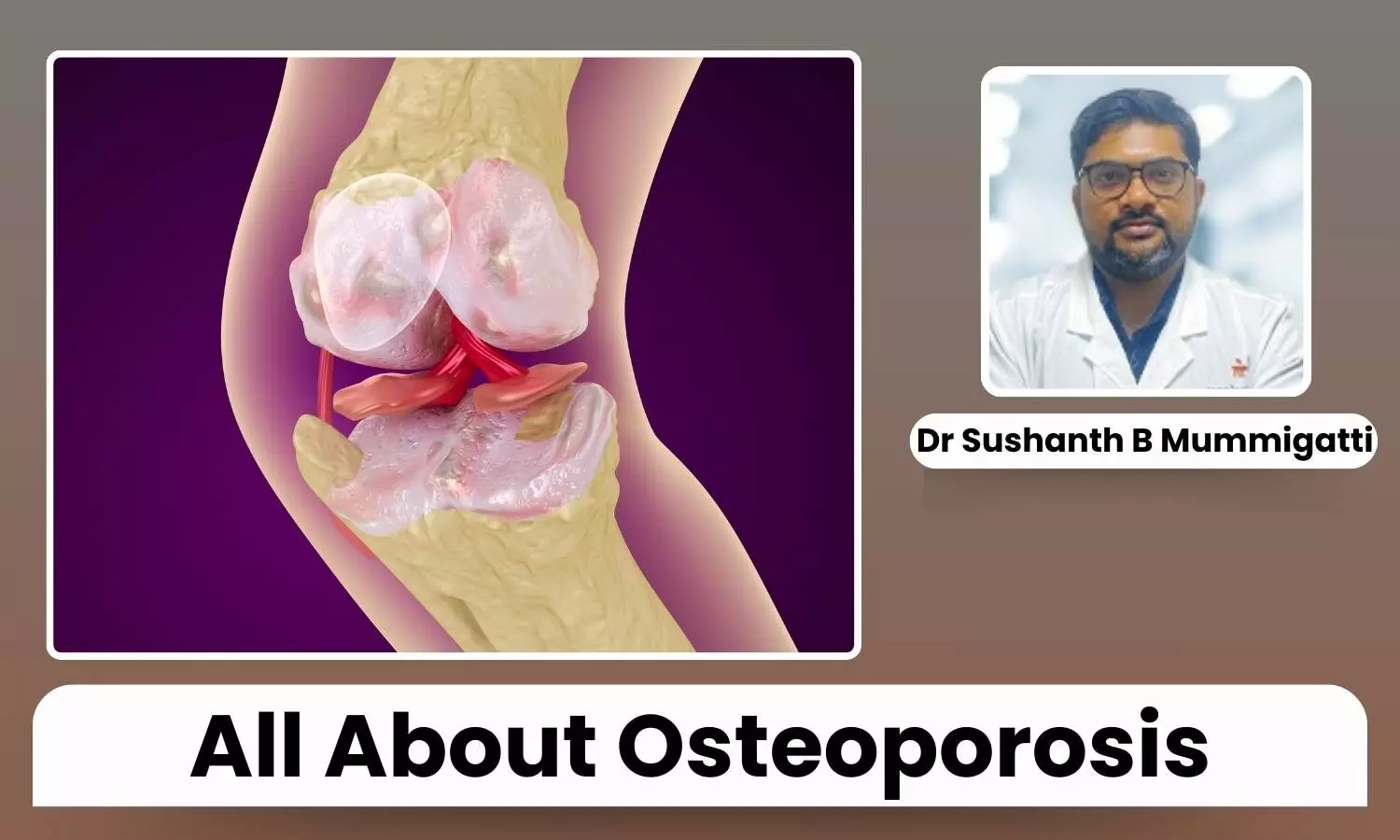What Is Osteoporosis? Causes, Symptoms, and Prevention Tips - Dr Sushanth B Mummigatti

What is Osteoporosis?
To understand about bone health and ways to stay healthy, it’s important to understand commonly encountered conditions related to bones. Osteoporosis is one of those very commonly talked about condition while discussing bone health.
To put it in simple terms, osteoporosis is a medical condition in which the quality and strength of the bone decreases and the bones are at a higher risk of fractures compared to the normal bone.
Medically, it is defined as bone mineral density(BMD) score of less than 2.5(-2.5 or less), with scores of -1.5 to -2.5 termed as osteopenia and score more than -1.5 termed as normal.
The basic structure of normal bone includes both mineral components and structural matrix. Osteoporosis results in a simultaneous deficiency of bone matrix and mineralization, which causes the bone to become weaker.
The trabecular structure that supports bone strength disappears, thus causing both bone weakness and higher fracture susceptibility. When bone composition becomes disrupted, it turns into a fragile structure that easily sustains damage.
Causes and Risk Factors of Osteoporosis
The combination of lifetime inadequate calcium consumption along with kidney disease causes osteoporosis. Osteoporosis develops most frequently in elderly people and postmenopausal women, and patients who experience long-term immobility because of fractures or paralysis or muscle weakness.
Bone infections along with polio and specific types of arthritis and eating disorders all play roles in contributing factors. The risk for developing osteoporosis increases with extremely low body weight.
The condition weakens bones, which raises the risk of fractures alongside serious complications. The prevention of serious osteoporosis outcomes requires early detection combined with dietary control and life-style modifications and medical care.
Diagnosis and Symptoms of Osteoporosis
The initial signs of osteoporosis frequently escape detection because people often receive their first diagnosis through standard medical examinations like hip X-rays during routine check-ups.
Common symptoms include:
- Generalized Body Weakness: The disease causes generalized body weakness that results in decreased physical ability.
- Lower Back Pain: Weight-bearing bones and the lower back experience pain, which makes everyday activities more difficult to perform.
- Shin Pain: The pain occurring in the shin region can intensify during movements.
- Swelling of Joints: Weakened bones lead to swelling in joints and lower limb areas.
- Pathological Fractures: Patients can develop pathological fractures because of minimal trauma to the bones.
- Nerve Compression Symptoms: Spinal nerve compression symptoms including tingling and numbness develop with spinal fractures.
Healthcare professionals rely on DEXA scan (Dual Emission X-ray Absorptiometry) as the primary tool to diagnose osteoporosis objectively. The scan analyses three body regions (hip and spine and wrist) to determine risk levels for fractures by calculating T and Z scores.
Prevention and Treatment of Osteoporosis
Elderly people benefit from daily brisk walks totalling at least thirty minutes to build stronger bones and improve their complete health status. The treatment of osteoporosis benefits from exercise types that include strength training along with balance exercises and movements.
After diagnosis, doctors prescribe calcium and vitamin D3 supplements alongside medications which include calcitonin and recombinant PTH and monoclonal antibody treatments such as denosumab.
Treatment regimens differ according to both disease severity levels and existing medical conditions. Keeping a healthy weight remains essential because low body weight creates an increased danger of osteoporosis-related health problems. Early treatment interventions result in better outcomes while stopping fractures before they occur.
Disclaimer: The views expressed in this article are of the author and not of Health Dialogues. The Editorial/Content team of Health Dialogues has not contributed to the writing/editing/packaging of this article.


